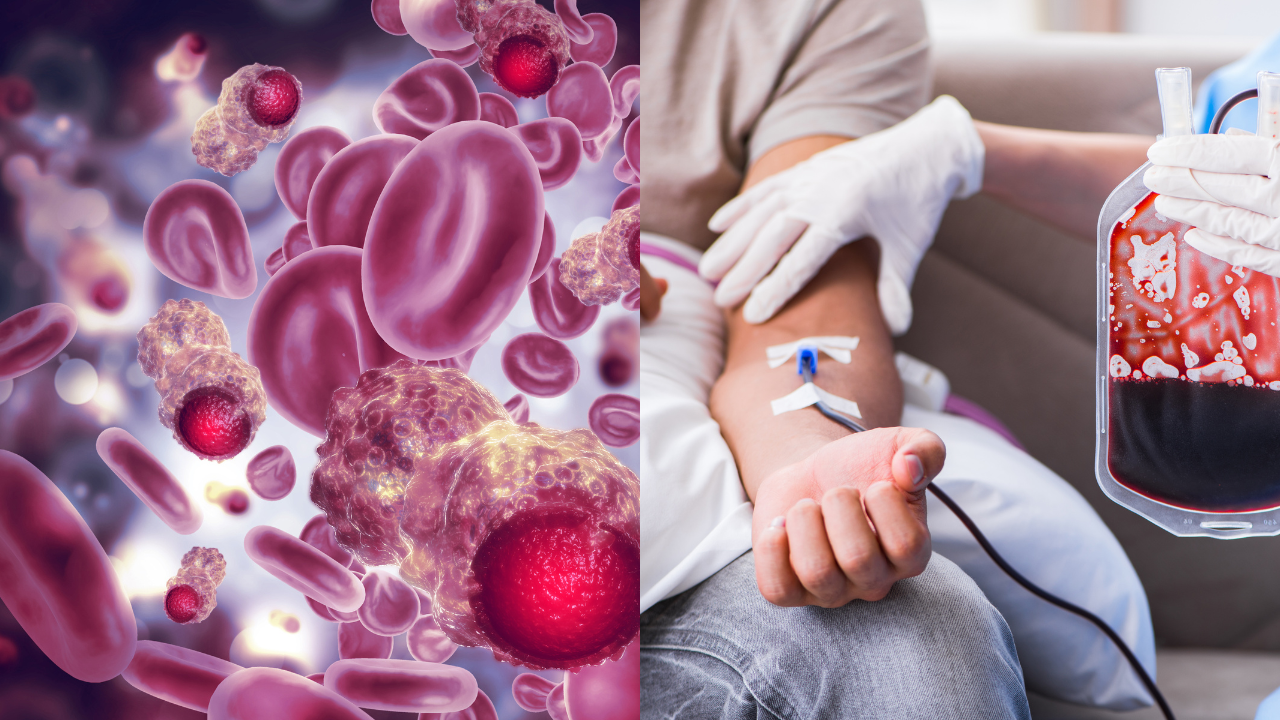Blood cancer Cancer remains a major health problem, with over 100,000 cases diagnosed annually in India. A significant portion of these patients are children, and many face life-threatening complications as cancer disrupts the normal production and functioning of blood cells. Despite advances in treatment options, such as stem cell transplantsPublic misconceptions hamper access to life-saving care. Experts Nitin Agarwal, Head of Donor Application Management at DKMS-BMST Foundation in India, and Dr Prashant Mehta, Senior Consultant, Medical Oncology, Amrita Hospital, Faridabad, shed light on these myths and the reality behind them.
Myth 1: Blood group compatibility is sufficient for stem cell transplants
A common misconception is that a compatible blood type guarantees a successful stem cell transplant. Agarwal clarified that stem cell matching is much more complex and involves the presence of human leukocyte antigen (HLA) markers. “For a successful transplant, there needs to be a near-perfect match for 10 of the 10 relevant HLA characteristics,” he explained. Blood type alone does not determine compatibility; instead, the donor’s HLA profile must closely match that of the patient. Although family members can be potential donors, most patients (about 70%) will need unrelated donors with compatible HLA markers.
Myth 2: Stem cell donation is painful and risky
Another common concern is that stem cell donation is a painful and risky procedure. Agarwal debunked this myth by stating that stem cell donation is minimally invasive and similar to platelet donationThe process typically takes four to six hours, during which stem cells are extracted from the donor’s peripheral blood. “Donors typically do not experience any significant pain and can leave the clinic the same day,” he said. The body replenishes donated stem cells naturally within weeks, and flu-like symptoms caused by pre-donation injections are temporary.
Myth 3: Ethnicity doesn’t matter when it comes to finding a partner
A widely held belief is that ethnicity plays no role in finding a compatible donor. However, Agarwal said ethnicity is a crucial factor. “Patients are more likely to find a compatible donor within their ethnic group because people from the same group tend to share similar tissue traits,” he said. With more than 25,000 known HLA characteristics, the process of finding a perfect match is extremely rare, particularly for people of mixed ethnic backgrounds.
Myth 4: Family members can always be donors
Contrary to the belief that family members make the best donors, only about 30% of patients find a match within their families. “The remaining 70% need unrelated donors,” Agarwal noted. This highlights the importance of increasing the number of registered stem cell donors worldwide, especially in ethnically diverse countries like India.
Myth 5: Blood cancer is incurable
Dr. Mehta addressed another damaging myth. He said, “All blood cancers are treatable, and many are curable with timely treatment.” Blood cancers are classified into three main types: lymphoma, leukemia, and myeloma, each with several subtypes that respond differently to treatment.
Myth 6: Blood cancer is always aggressive
Not all blood cancers are rapidly fatal. Dr. Mehta explained that some types, such as chronic lymphocytic leukemia (CLL) and certain slow-growing lymphomas, may not require immediate treatment and can be monitored for years. “Leukemias and lymphomas can be slow-growing or aggressive, and the approach to treatment depends on the type and progression of the cancer,” he said.
Myth 7: Chemotherapy It is the only treatment for blood cancer.
While chemotherapy remains a vital treatment, its role is diminishing with the advent of targeted therapies and immunotherapy. Dr. Mehta said common blood cancers, such as CLL and chronic myeloid leukemia (CML), are increasingly being treated with oral targeted drugs, reducing the need for chemotherapy. Even for aggressive types such as acute leukemia, immunotherapy is becoming a standard part of treatment protocols.
Myth 8: Bone marrow transplant It is a surgical procedure
Finally, Dr. Mehta debunked the myth that a bone marrow transplant involves surgery. “The procedure, now known as a stem cell transplant, does not involve cutting any bones,” he clarified. For donors, it is similar to donating blood, with negligible side effects. The goal is to replace the patient’s diseased bone marrow cells with healthy cells from a matched donor, a process that can dramatically improve outcomes for patients.
Disclaimer:
The information contained in this post is for general information purposes only. We make no representations or warranties of any kind, express or implied, about the completeness, accuracy, reliability, suitability or availability with respect to the website or the information, products, services, or related graphics contained on the post for any purpose.
We respect the intellectual property rights of content creators. If you are the owner of any material featured on our website and have concerns about its use, please contact us. We are committed to addressing any copyright issues promptly and will remove any material within 2 days of receiving a request from the rightful owner.

